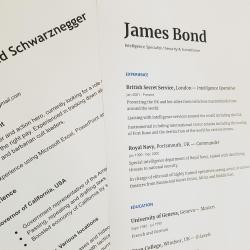How to Address Employment Gaps in Your Resume
Employment gaps in a resume are more common than ever. Whether due to personal reasons, further education, caregiving responsibilities, or unforeseen circumstances like layoffs, many job seekers find themselves with periods of unemployment. Addressing these gaps proactively and positively can make a significant difference in how potential employers perceive your application. Here's a comprehensive guide on how to handle employment gaps in your resume effectively.
1. Be Honest and Transparent
The first rule of addressing employment gaps is honesty. Attempting to hide an employment gap can lead to mistrust if discovered later. Instead, be upfront about your time away from the workforce. Whether it's a family commitment, personal health issue, or travel, straightforwardness is appreciated by employers.
2. Use a Functional Resume Format
A functional resume emphasizes skills and experiences over chronological work history. This format allows you to highlight your qualifications and achievements instead of focusing on the timeline of your employment. By organizing your resume by skill areas instead of by date, you can draw attention to your capabilities rather than the gaps in your career.
3. Highlight Relevant Experiences During the Gap
Many people engage in activities during employment gaps that demonstrate valuable skills and experiences. Volunteering, freelancing, consulting, or taking courses can all be relevant. Include these experiences in your resume as they showcase your initiative and willingness to develop professionally even during periods of unemployment.
4. Use Your Cover Letter Wisely
Your cover letter is an excellent place to address employment gaps. Briefly explain the reason for the gap without going into too much personal detail. Focus on what you learned during this time and how it makes you a better candidate. Emphasize your enthusiasm for returning to work and how your recent experiences have prepared you for the role you're applying for.
5. Prepare to Discuss Gaps in Interviews
If you've made it to the interview stage, be prepared to discuss your employment gaps. Employers are likely to ask about them, so practice a concise and confident explanation. Focus on the positive aspects, such as any skills you acquired or how the experience has prepared you for this new opportunity.
6. Keep Learning and Networking
If you're currently experiencing an employment gap, actively work on professional development. Take online courses, attend workshops, or get certifications to enhance your skill set. Networking is equally essential. Attend industry events, join professional groups, and connect with former colleagues to stay updated and informed about your field.
7. Tailor Your Resume for Each Job Application
Customize your resume for each job application by focusing on the skills and experiences most relevant to the job description. Highlight how your background, including any experiences during your employment gap, aligns with the role. A tailored resume helps to shift the focus from the gap to your suitability for the position.
8. Seek Professional Help if Needed
If you're struggling to present your employment history effectively, consider seeking professional help. Resume writers or career coaches are experienced in showcasing candidates' strengths and can provide personalized advice on addressing employment gaps.
Conclusion
Employment gaps are a natural part of many career paths, and addressing them with honesty and confidence can turn a potential negative into a positive. By focusing on the skills and experiences you gained during your time away from formal employment, you can present yourself as a well-rounded, proactive candidate. Remember, it's your skills, experiences, and enthusiasm that will ultimately win over employers, not a flawless work history.





















